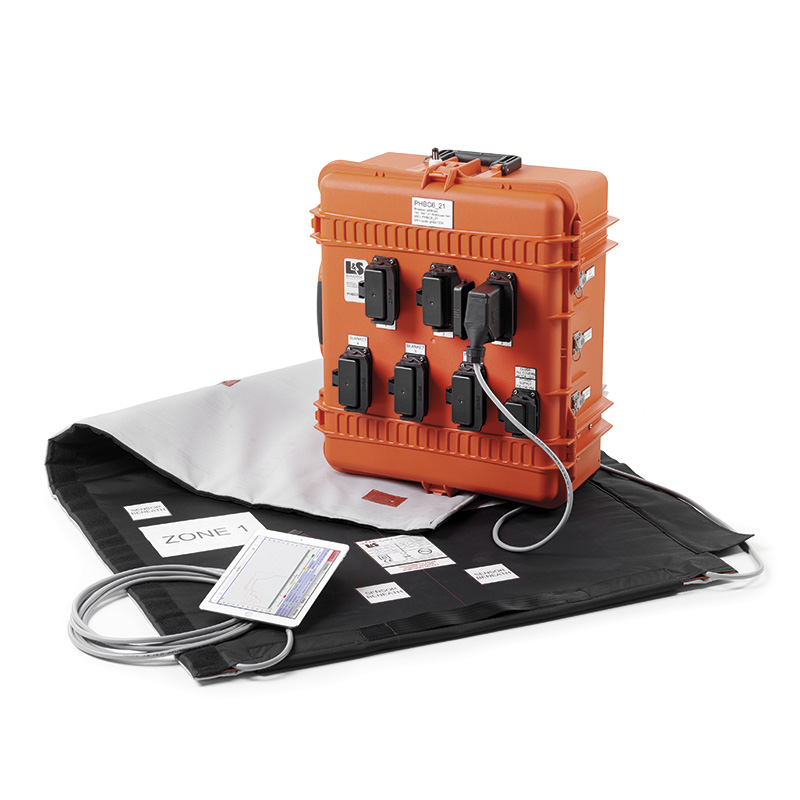Windpower
The unit named PHBC-6 (Portable Heating Blanket Controller), controls the temperature via bult-in sensors in the heating jacket.
At the same time, the PHBC-6 also measures and logs the ambient temperature and humidity.
PHBC-6 is developed in close cooperation with some of the most skilled composite engineers in the turbine blade maintenance business and
the manufacturer of heating blankets.
All management and control of temperature, data, alarms, trend curves, and programmed planning time is handled via a handheld tablet.
The screen layout involves a step-by-step solution, with each step requiring confirmation before proceeding to the next level. This is to ensure that the operators are aware of what needs to be done in each step and what needs to be logged before proceeding to the next level.
The idea behind the PHBC-6 is:
- To secure a proper repair each time, without any failures like too hot or too cold curing.
- To higher the quality of repairs and curing by reaching the correct TG value each time in the first go.
- To avoid mistakes of monitoring curing temperatures over time.
- To decrease down time for the turbine, due to the fact, that repairs are perfect every time.
- To be able to start up, more than one repair job per turbine per day.
- To be able to supply an automatically generated and full documented report to the customer.
- To let the PHBC-6 work, as long as the maintenance people do something else.
- To monitor and control the curing process from another place.
- To communicate wireless between operator and PHBC-6.
- To reduce and save time in most aspects of the repair / curing.
- To be more reliable in the repair process



